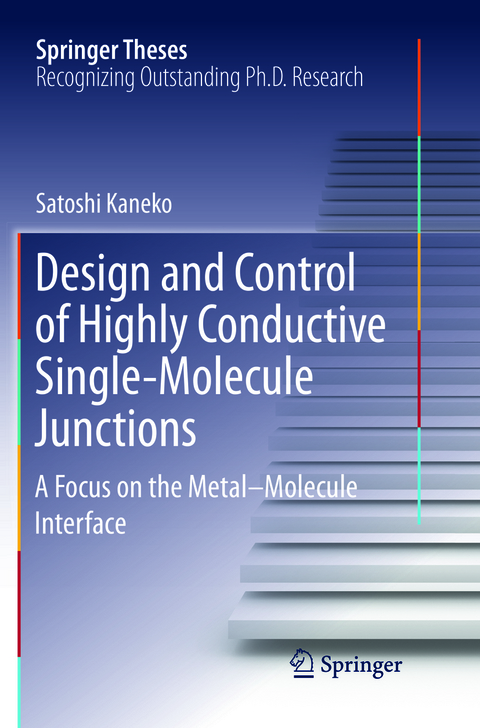
Design and Control of Highly Conductive Single-Molecule Junctions
A Focus on the Metal–Molecule Interface
Seiten
2018
|
Softcover reprint of the original 1st ed. 2017
Springer Verlag, Singapore
978-981-13-5129-7 (ISBN)
Springer Verlag, Singapore
978-981-13-5129-7 (ISBN)
This thesis describes improvements to and control of the electrical conductance in single-molecule junctions (SMJs), which have potential applications in molecular electronics, with a focus on the bonding between the metal and molecule. In order to improve the electrical conductance, the π orbital of the molecule is directly bonded to the metal orbital, because anchoring groups, which were typically used in other studies to bind molecule with metal electrodes, became resistive spacers. Using this direct π-binding, the author has successfully demonstrated highly conductive SMJs involving benzene, endohedral metallofullerene Ce@C82, and nitrogen. Subsequently, the author investigated control of the electrical conductance of SMJs using pyrazine. The nitrogen atom in the π-conjugated system of pyrazine was expected to function as an anchoring point, and two bonding states were expected. One originates primarily from the π orbital, while the other originates primarily from an n stateof the nitrogen. Measurements of conductance and dI/dV spectra coupled with theoretical calculations revealed that the pyrazine SMJ has bistable conductance states, in which the pyrazine axis is either tilted or parallel with respect to the junction axis. The bistable states were switched by changing the gap size between the metal electrodes using an external force. Notably, it is difficult to change the electrical properties of bulk-state materials using mechanical force. The findings reveal that the electron transport properties of a SMJ can be controlled by designing a proper metal–molecule interface, which has considerable potential for molecular electronics. Moreover, this thesis will serve as a guideline for every step of SMJ research: design, fabrication, evaluation, and control.
Introduction.- Theoretical background.- Experimental concepts and techniques.- Design of the metal–molecule interaction at the benzene single-molecule junction.- Design of the interface structure of a single-molecule junction utilizing spherical endohedral Ce@C82 metallofullerenes.- Anchoring groups enclosed in the π-conjugated system in N2 molecules.- Controlling the electrical property of highly conductive pyrazine single-molecule junction.- General conclusions.
| Erscheinungsdatum | 04.03.2022 |
|---|---|
| Reihe/Serie | Springer Theses |
| Zusatzinfo | 38 Illustrations, color; 2 Illustrations, black and white; XIII, 84 p. 40 illus., 38 illus. in color. |
| Verlagsort | Singapore |
| Sprache | englisch |
| Maße | 155 x 235 mm |
| Themenwelt | Naturwissenschaften ► Chemie ► Physikalische Chemie |
| Naturwissenschaften ► Physik / Astronomie ► Festkörperphysik | |
| Technik ► Elektrotechnik / Energietechnik | |
| Schlagworte | Control of electrical conductance • electron transport • Molecular electronics • Single molecular junction • Single molecule spectroscopy |
| ISBN-10 | 981-13-5129-5 / 9811351295 |
| ISBN-13 | 978-981-13-5129-7 / 9789811351297 |
| Zustand | Neuware |
| Informationen gemäß Produktsicherheitsverordnung (GPSR) | |
| Haben Sie eine Frage zum Produkt? |
Mehr entdecken
aus dem Bereich
aus dem Bereich
Quantenmechanik | Spektroskopie | Statistische Thermodynamik
Buch | Softcover (2024)
De Gruyter (Verlag)
59,95 €
Set aus Lehrbuch und Arbeitsbuch
Buch | Hardcover (2022)
Wiley-VCH (Verlag)
109,00 €
Thermodynamik | Kinetik | Elektrochemie
Buch | Softcover (2024)
De Gruyter (Verlag)
59,95 €


